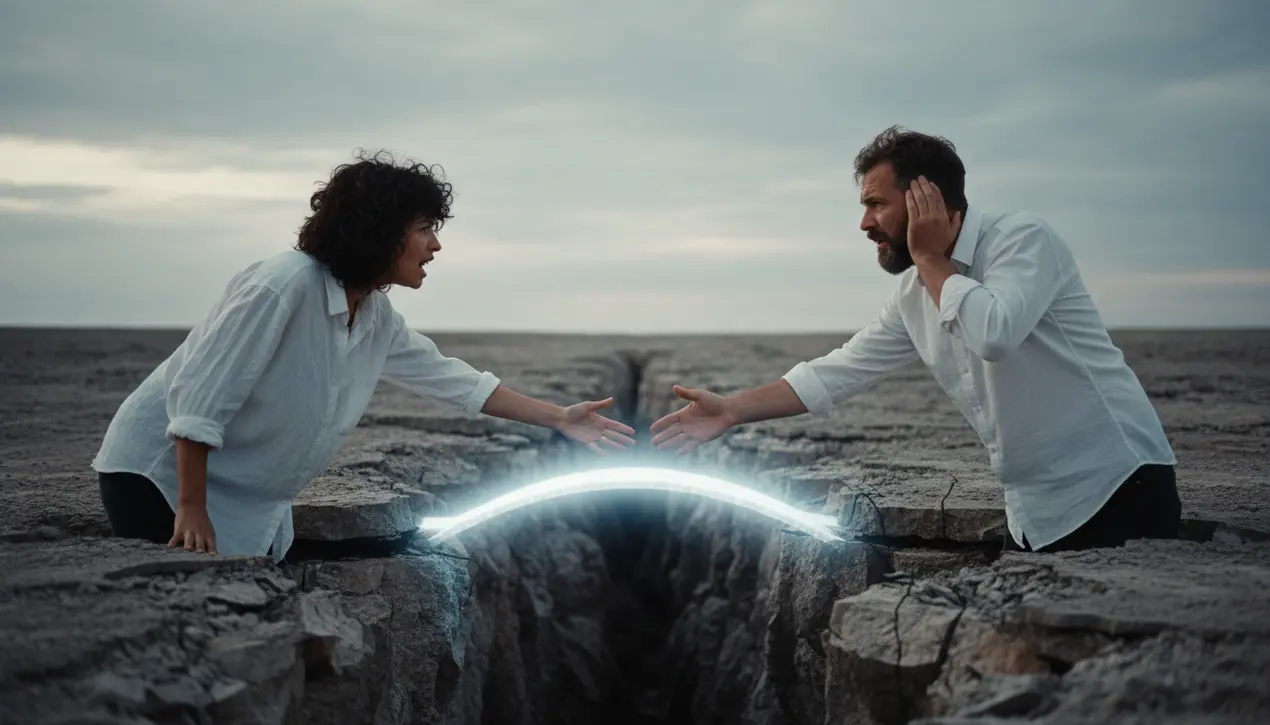
Scienceneuroscience
How to Fix Breakdowns in Communication
LA
Laura Bennett
2 hours ago7 min read1 comments
Two people meet, discover an uncommon electricity flowing between them, exhilarate each other into forgetting the abyss that always gapes between one consciousness and another, until one day they realize they are having profoundly different experiences of the same situation and find themselves suddenly hanging from the precipice of the abyss with one hand, sparring over the reality of the situation with the other. What to do? It’s a scene I’ve heard recounted in dozens of interviews, a universal human fracture point where love or friendship or professional partnership hits a wall not of malice, but of misunderstood perception.In 1951, as the Cold War was menacing the world with mutually assured destruction on a geopolitical scale, the pioneering humanist psychologist Carl R. Rogers addressed the Centennial Conference on Communications at Northwestern University with a radical proposition for a more personal kind of diplomacy.He argued that the greatest barrier to communication is our tendency to judge, to evaluate, to approve or disapprove of the statements of the other person. We are so busy formulating our rebuttal, defending our own reality, that we fail to actually hear the human being in front of us.Rogers, whose person-centered approach revolutionized therapy, believed the antidote was ‘active listening’—a profound and often misunderstood practice. It’s not merely waiting for your turn to talk, nor is it passive agreement.It’s the strenuous, empathetic work of seeing the world from the other person’s internal frame of reference, of sensing the emotions behind the words, and of reflecting that understanding back to them to ensure the true message has been received. I remember speaking with a couple, Sarah and Mark, who were on the verge of separation over what seemed to be a trivial argument about household chores.The real issue, unearthed after they practiced truly listening to each other without interruption or judgment, wasn’t about who took out the trash. For Sarah, a clean home represented stability and care, a sanctuary from a chaotic childhood.For Mark, being nagged about chores felt like a rejection of his long work hours, which he saw as his primary contribution to the family. They weren’t arguing about dishes; they were arguing about love, security, and respect, speaking entirely different emotional languages.This breakdown mirrors what happens in boardrooms, on social media threads, and across political divides. We project our own histories, fears, and meanings onto a situation, then battle the other person’s projection as if it were an objective fact.Rogers’s method provides a toolkit to lower the drawbridge over that abyss: listen for the feeling, not just the content; grant the other person the dignity of their own subjective experience; and resist the primal urge to immediately correct or persuade. The consequence of ignoring this is a slow, quiet erosion of connection, a loneliness that persists even in a crowded room.The potential, however, is nothing less than a form of alchemy, where a communication breakdown becomes a breakthrough into a deeper, more resilient understanding. It’s the hard, unglamorous work of building a shared reality, one honest, carefully listened-to conversation at a time.
#communication
#psychology
#Carl Rogers
#relationships
#conflict resolution
#featured
Stay Informed. Act Smarter.
Get weekly highlights, major headlines, and expert insights — then put your knowledge to work in our live prediction markets.
Related News
Comments
Loading comments...
© 2025 Outpoll Service LTD. All rights reserved.